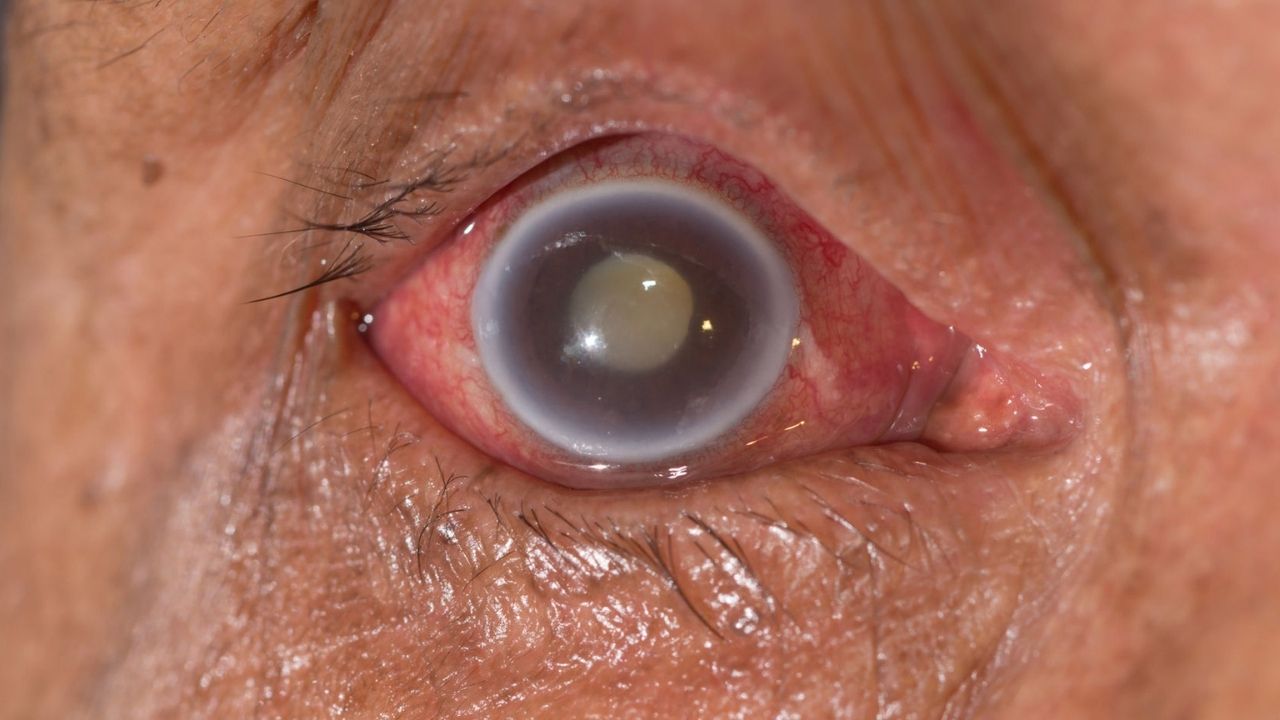
Microcornea Glaucoma Absent Frontal Sinuses is a rare genetic disorder that affects the eyes and sinuses. Microcornea means having smaller-than-normal corneas, which can lead to vision problems. Glaucoma is a condition that damages the optic nerve, often due to high eye pressure, and can result in blindness if untreated. The absence of frontal sinuses means the air-filled spaces in the forehead are missing, which can cause respiratory issues. Understanding this condition is crucial for early diagnosis and management. Here are 25 facts to help you grasp the complexities of this rare disorder and its impact on those affected.
Key Takeaways:
- Microcornea Glaucoma Absent Frontal Sinuses is a rare genetic disorder affecting the eyes and sinuses, causing vision problems, eye pain, and headaches. Early diagnosis and treatments can help manage symptoms effectively.
- Research for this condition is ongoing, aiming to find better treatments and possibly a cure through gene therapy, new medications, and clinical trials. Joining support groups and maintaining a healthy lifestyle can also help manage daily life with this condition.
What is Microcornea Glaucoma Absent Frontal Sinuses?
Microcornea Glaucoma Absent Frontal Sinuses is a rare genetic disorder. It affects the eyes and sinuses, leading to various complications. Understanding this condition can help in managing its symptoms better.
- Microcornea means having an abnormally small cornea. The cornea is the clear front part of the eye.
- Glaucoma is a group of eye conditions that damage the optic nerve, often due to high eye pressure.
- Absent Frontal Sinuses refers to the lack of frontal sinuses, which are air-filled spaces in the forehead.
Symptoms of Microcornea Glaucoma Absent Frontal Sinuses
Symptoms can vary widely among individuals. Knowing these can help in early diagnosis and treatment.
- Vision Problems: People may experience blurred vision or difficulty seeing.
- Eye Pain: Increased eye pressure can cause significant discomfort.
- Headaches: The absence of frontal sinuses can lead to frequent headaches.
- Sensitivity to Light: Bright lights may cause discomfort or pain.
- Tearing: Excessive tearing can occur due to eye irritation.
Causes and Genetics
Understanding the causes can provide insight into how this condition develops.
- Genetic Mutation: A mutation in the FOXC1 gene is often responsible.
- Inherited: This condition can be passed down from parents to children.
- Sporadic Cases: Sometimes, it occurs without a family history.
Diagnosis
Early diagnosis is crucial for managing symptoms effectively.
- Eye Examination: An ophthalmologist can detect microcornea and glaucoma.
- Imaging Tests: CT scans or MRIs can confirm the absence of frontal sinuses.
- Genetic Testing: Identifying mutations in the FOXC1 gene can confirm the diagnosis.
Treatment Options
While there is no cure, treatments can help manage symptoms.
- Medications: Eye drops can reduce eye pressure.
- Surgery: Procedures like trabeculectomy can help drain excess fluid from the eye.
- Glasses or Contact Lenses: These can improve vision affected by microcornea.
- Pain Management: Medications can help alleviate headaches and eye pain.
Living with Microcornea Glaucoma Absent Frontal Sinuses
Managing daily life with this condition involves several strategies.
- Regular Check-ups: Frequent visits to an eye specialist are essential.
- Protective Eyewear: Sunglasses can help with light sensitivity.
- Healthy Lifestyle: A balanced diet and regular exercise can improve overall health.
- Support Groups: Connecting with others who have the condition can provide emotional support.
Research and Future Directions
Ongoing research aims to find better treatments and possibly a cure.
- Gene Therapy: Scientists are exploring ways to correct the genetic mutation.
- New Medications: Research is underway to develop more effective drugs.
- Clinical Trials: Participating in trials can provide access to cutting-edge treatments.
Final Thoughts on Microcornea Glaucoma Absent Frontal Sinuses
Microcornea glaucoma absent frontal sinuses is a rare condition that affects vision and facial structure. Understanding its symptoms and causes helps in early diagnosis and treatment. Regular eye exams and genetic counseling can make a big difference for those affected.
This condition often requires a multidisciplinary approach, involving ophthalmologists, geneticists, and other specialists. Early intervention can help manage symptoms and improve quality of life.
Awareness and education about this rare condition are crucial. Sharing information can lead to better support and resources for those affected.
If you or someone you know shows symptoms, consult a healthcare professional for proper diagnosis and treatment options. Knowledge is power, and staying informed can lead to better health outcomes.
Frequently Asked Questions
Was this page helpful?
Our commitment to delivering trustworthy and engaging content is at the heart of what we do. Each fact on our site is contributed by real users like you, bringing a wealth of diverse insights and information. To ensure the highest standards of accuracy and reliability, our dedicated editors meticulously review each submission. This process guarantees that the facts we share are not only fascinating but also credible. Trust in our commitment to quality and authenticity as you explore and learn with us.
